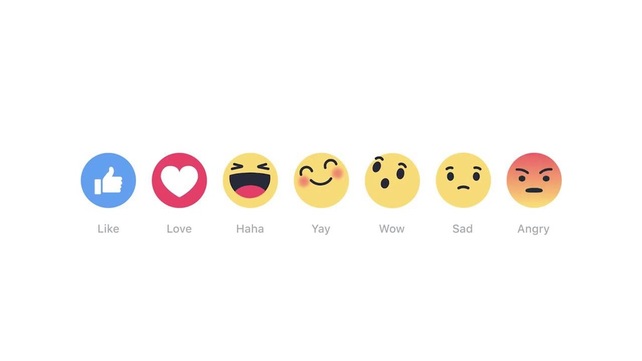|
When companies release products or exclusive service offerings it’s incredibly important to get early adopters on board. Early adopters are integral to a successful launch strategy because they’re usually the people at the forefront of their industries and the ones that are most likely to become brand advocates if they like what you have to offer. So how can you reach this all-important audience?
0 Comments
If you routinely use Facebook on a desktop or laptop, you’ve likely noticed that Facebook has undergone a big change. The humble “like” button now has a few friends – emojis for “love,” “haha”, “wow,” “sad,” and “angry.” Many mobile users are still simply seeing the old “like” option, but as Facebook apps across all mobile devices catch on, expect to see much more varied responses to your friends’ posts in your Facebook timeline.
Facebook rolled out this change at the end of February after years of feedback that people wanted the ability to dislike posts in the same way that they could “like” them. After a lot of analysis to determine how people wanted to be able to respond to posts, and what those response emojis should look like to convey their respective emotions appropriately, Facebook released five new reaction options. These reactions allow Facebook users to convey much more nuanced emotions in response to a post rather than the simple binary like or dislike. So what do Facebook reactions mean for your business and how can you use them to develop content? Using our social media expert opinion, we’re here to help break it down for you! I love cooking and trying new recipes, so over the years I’ve signed up to have recipes emailed to me from a bunch of different companies. These companies and their emails are as different as can be. For example, one of the companies that I currently get emails from is a grocery chain that sends seasonal recipes that make use of local ingredients quarterly. Another company is a prepared food delivery service that sends emails biweekly with recipes for elevated weeknight meals. Still another is a cooking school that sends pretentious weekly recipes that I would need to make a special trip to the grocery store and set aside an entire afternoon to make. And then there’s Betty Crocker, which provides a daily roundup of fast, easy recipes that use simple everyday ingredients.
One thing I’ve noticed is that Betty Crocker outshines all of the other food-related companies when it comes to their email marketing. I make their recipes more frequently than any of the other recipes I receive from different sources, and I’m more likely to share their recipes with friends and family (even before I’ve even tried them). I also prioritize their emails above most of the other noise in my inbox. Why? The main reason why Betty Crocker’s emails are so successful is because they do a remarkable job of repurposing content! Their approach is something that businesses can learn a lot from and mirror in their content strategy. Here’s how your business can take the Betty Crocker approach: |
About The LionShark Digital Marketing BlogWelcome to the official LionShark blog! Categories
All
|


 RSS Feed
RSS Feed
